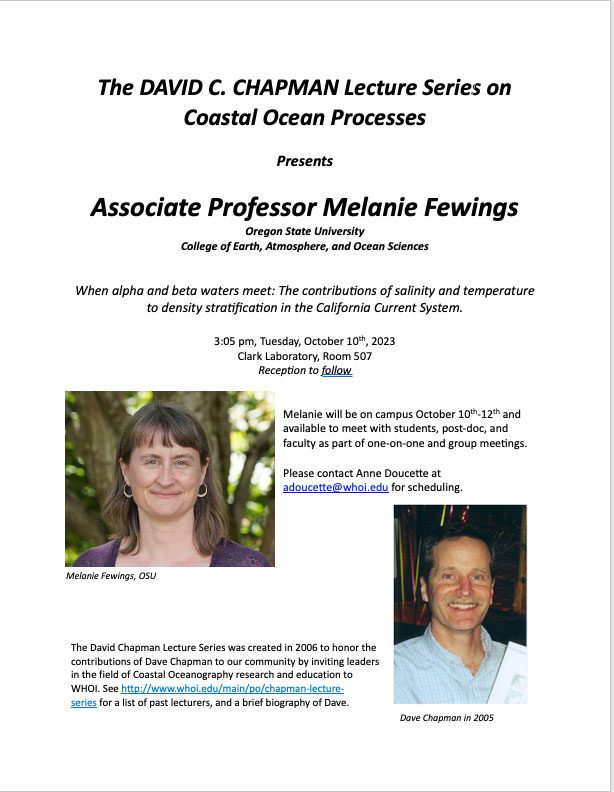2023 Chapman Lecture
When alpha and beta waters meet: The contributions of salinity and temperature to density stratification in the California Current System.
Associate Professor Melanie Fewings
Oregon State University
College of Earth, Atmosphere, and Ocean Sciences
Tuesday, October 10, 2023, 3:05 p.m.
Clark Building, Room 507
Reception to follow
The Northern California Current System supports major fisheries that respond strongly to seasonal variability in water properties — such as temperature, salinity, and dissolved oxygen — that directly influence organisms. The water properties are affected by upwelling and downwelling circulations, which have vertical structures that can change with vertical density stratification. This leads us to ask whether temperature or salinity is the dominant control on the density stratification. Since 1997, shipboard hydrographic transects have been carried out ~biweekly to monthly on the inner portion of the Newport Hydrographic (NH) Line. These sections cover the continental shelf and slope off Oregon, USA at NH Line stations NH01–NH25, 1-25 nautical miles from the coast. Using the >550 available cross-shelf sections, we calculated monthly median water temperature, salinity, potential density, and quantities related to vertical stratification. To estimate the separate contributions of temperature and salinity stratification to the vertical density stratification over the shelf and slope, we calculated the contributions of temperature and salinity to the buoyancy frequency squared and to the spice stratification, analogous to buoyancy frequency but for spice instead of density. For a normalized measure of whether vertical density stratification is controlled by temperature or salinity, we used the Stratification Control Index (Caneill et al. 2017). Over the shelf and slope on the NH Line, the vertical density stratification is typically salinity controlled. The exception is in the shallow seasonal thermocline present above ~30 m depth from July–October. In ongoing work, we connect these patterns to the California Undercurrent, reveal the along-coast transition to temperature-controlled stratification in the Southern CCS, and examine connections to stratification patterns in the broader Northeast Pacific.
Melanie will be on campus October 10th-12th and available to meet with students, post-doc, and faculty as part of one-on-one and group meetings.
Please contact Anne Doucette at adoucette@whoi.edu for scheduling.

